- Development and use of semi-empirical spectral ground motion models for GPP-induced micro-earthquakes in Southern Germany. Bulletin of Earthquake Engineering, 2024 more… BibTeX Full text ( DOI )
- Soil-structure-interaction effects on the seismic performance of a masonry building under geothermal power plants induced earthquakes. Structures 55, 2023, 468-481 more… BibTeX Full text ( DOI ) Full text (mediaTUM)
- Seismic performance assessment of a masonry building under earthquakes induced by geothermal power plants operation. Journal of Building Engineering 48, 2022, 103909 more… BibTeX Full text ( DOI ) Full text (mediaTUM)
- Seismic Risk Assessment of a Masonry Building Due to the Geothermal Power Plant Earthquakes. , Ed.: Chair of Structural Mechanics, Technical University of Munich, Chair of Structural Mechanics, Technical University of Munich (Munich) , (Publications of the Chair of Structural Mechanics of the Technical University of Munich 17), 2021, more… BibTeX Full text (mediaTUM)
Seismic Risk Assessment of a Masonry Building Due to the Geothermal Power Plant Earthquakes
Geothermal induced earthquakes
Due to a lack of available energy resources, the development of geothermal power plants (GPPs) as a renewable and green energy source has risen globally, notably in Germany, in recent decades. However, several aspects of this new technology are still unclear and need further investigation to be understood. This study focused on one of the important side effects of geothermal power plant activities. According to available reports, the operation of GPPs in various sites throughout the world coincided with low-to-moderate earthquakes. The population of the surrounding region may experience disruptions in their everyday lives as a result of these earthquakes. Even in the past, these earthquakes caused the entire plant to be shut down due to the induced damage to the neighboring buildings and their people. The primary goal of this study is to evaluate the seismic risk imposed on masonry buildings, as a vulnerable type of building, due to the GPP operation. In this regard, the earthquake phenomenon itself is studied statistically in the first phase to generate a model capable of probabilistically simulating the key characteristics of the induced earthquakes by the GPP operation. In the next step, the ground motions recorded as a result of GPP operations in various regions of the world are statistically analyzed. This analysis serves as the basis for the development of probabilistic ground motion prediction equations for simulating the main intensity measurements of GPP-induced ground motions.
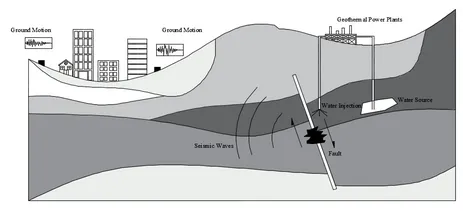
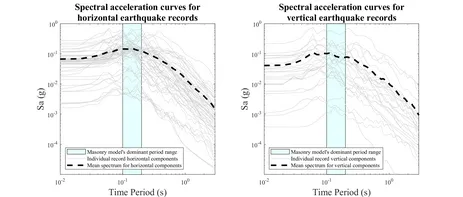
Finite-Element-Model
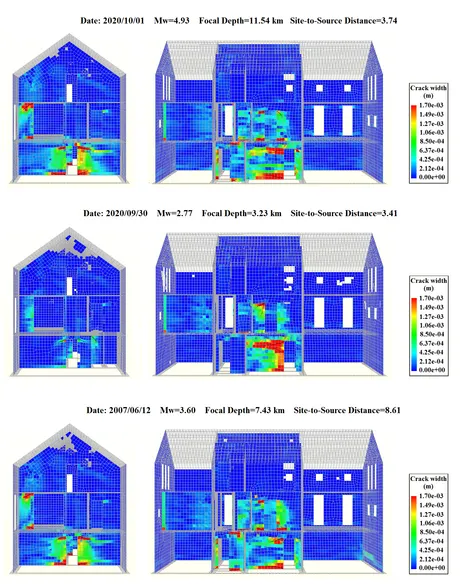
Following the development of these seismic hazard simulation models, a typical masonry structure in Bavaria, Germany, is considered. A macro-scale 3-dimension finite element analysis approach is used to analyze the nonlinear behavior of masonry walls. Then, the performance of this building is evaluated under a set of selected real ground motions induced by GPPs activity from two perspectives: structural damage and occupant comfort. In the last section, an attempt is made to evaluate the seismic risk and losses of the considered building due to various GPP-induced earthquake hazard scenarios. Besides developing some models for GPP-induced earthquake hazard scenarios and proposing fragility curves for structural damage and occupant discomfort of masonry buildings, the main result of this research work can be summarized in this sentence: earthquakes induced by GPP activities, especially located near the buildings, may disrupt the daily lives of the selected masonry building occupants; however, major structural damage is not expected.
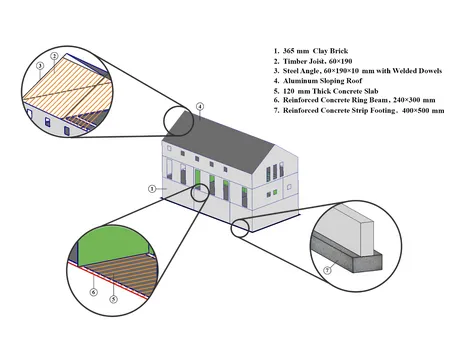
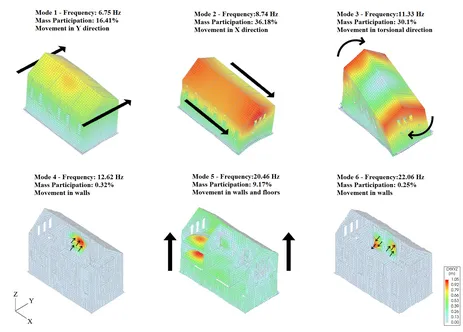
Acknowledgment
We wish to thank the TUM (Technische Universität München) University Foundation Fellowship that financed this research activity.